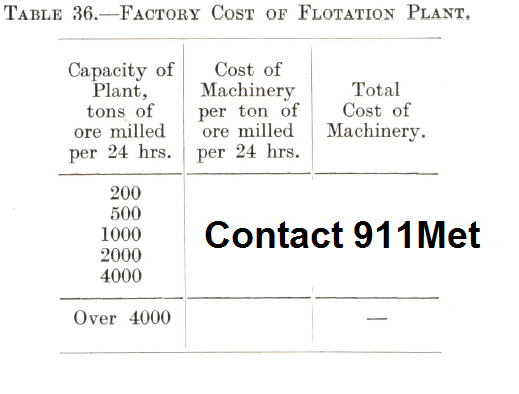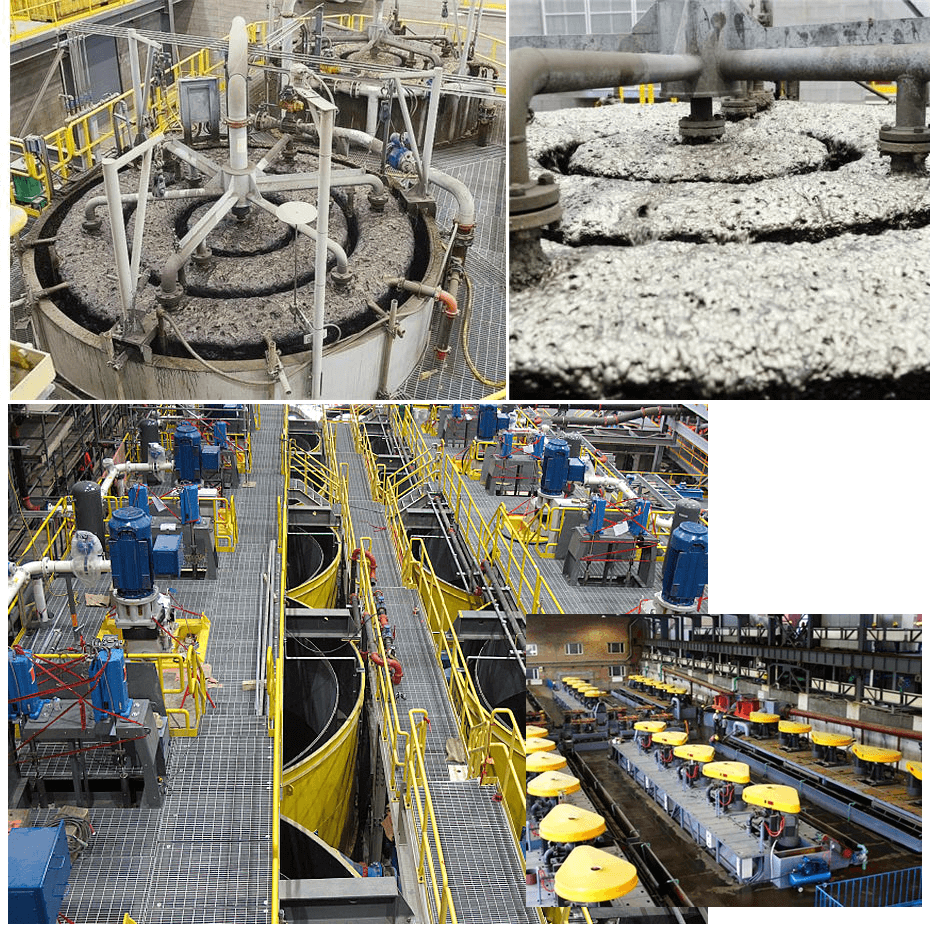Although froth flotation was originally developed for mineral separations in the early 20th century, the use of this process has been extended in the last twenty years.
From a processing viewpoint, all of these seemingly different industrial uses can be treated using the same theoretical concepts (including equipment and basic underlying chemical reagent structures) that have been developed in the mineral separations industries to Large Scale Flotation Plants. For this, here we enjoy dealing directly with the separation of fine solid particles of one component (or a few components) from metals in a mixture existing in an aqueous medium and the gas bubbles being air bubbles.
Here are reasons why the industrial use of froth flotation still growing to the level of Large Scale Flotation Plants:
- the high separation throughput possible per unit of capital cost in equipment.
- the low operating cost per unit of throughput.
- the high separation efficiency (selectivity) possible between mixtures of fine particle components; 4) the high operating flexibility offered by available equipment.
- the availability of a wide variety of both cost effective and technically effective reagent chemistries for different mixtures of particles to be separated. In short, there simply isn’t a more cost-effective way of separating fine particle components if the flotation process can be shown to be applicable.
It is in the separation of various minerals from naturally occurring ores (rocks) that flotation has seen its major historical use. The flotation process is the most efficient, most widely used, and probably the most complex of all mineral concentration methods in use by the global mining industry. As a process, froth flotation is the principal means by which minerals in fine particle form containing materials such as copper, molybdenum, nickel, lead, zinc, gold, platinum, phosphate, or potash are separated from associated particles of gangue materials such as silica, silicates (clays), carbonates, or iron sulphides. Also amenable to upgrading by flotation are fine coals and other mineral commodities such as fluorspar, glass sand, barite, pyrite, talc, and iron oxides.
Capital Cost of Flotation Plant
Table 36 gives the approximate factory cost of the machinery of a modern single-stage flotation plant, including the buildings and all equipment.
An installation designed with a more complicated circuit for the treatment of a difficult ore may cost up to 20% more. A two-stage flotation plant for comparatively rich lead-zinc or other complex ores will cost 40 to 50% more.
The approximate weight of machinery, buildings, and equipment to b e shipped is one ton for every ton of ore capacity per 24 hours in the case of a simple single-stage flotation plant, and 1½ tons in the case of a two-stage installation.
e shipped is one ton for every ton of ore capacity per 24 hours in the case of a simple single-stage flotation plant, and 1½ tons in the case of a two-stage installation.
The construction and erection costs, including the work of the designing and drawing office, but exclusive of freight and customs charges, amount to 80-120% of the machinery cost as given above, according to local facilities and labour conditions.
Freight and customs charges depend on the locality in which the plant is to be erected. It is usually possible to obtain an approximate average figure for the freight charge per ton of machinery shipped from the factory to the plant site, from which the total freight cost can be calculated. The customs duties are normally based on the value of the machinery imported, and the amount to be expended under this heading can be estimated from the customs schedules of the country concerned. The addition of the total freight and customs charges to the factory cost of the machinery, buildings, and equipment, together with the amount required for construction and erection, will give the capital cost of the whole installation.

